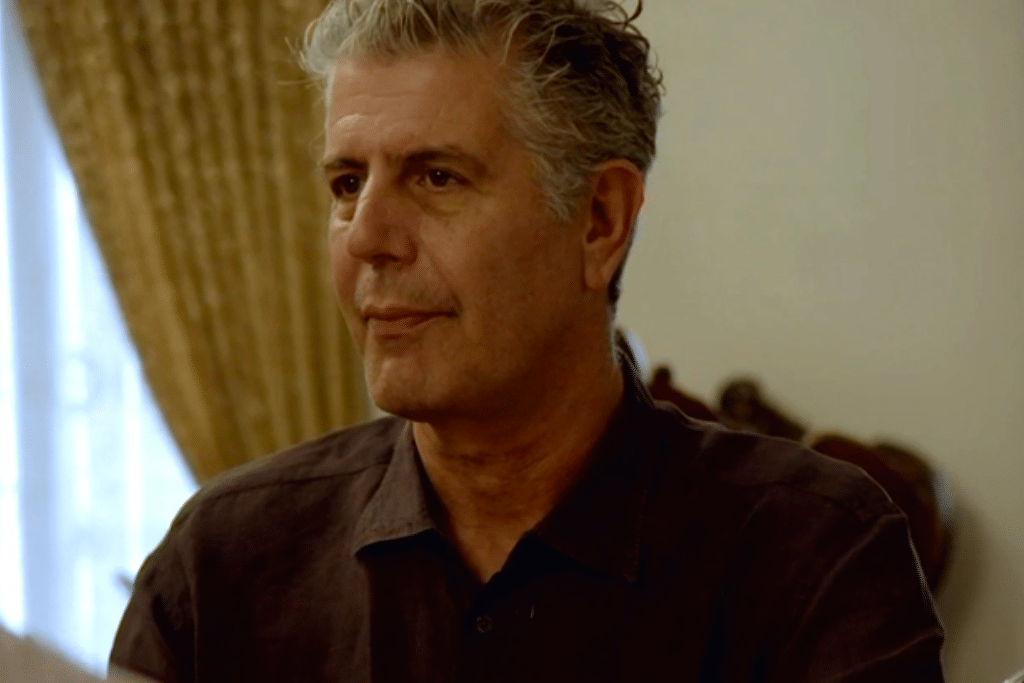Skift Take
This is simply the best episode of season three with Bourdain eloquently explaining the culture, politics, and food of Iran and, as only he has a knack to do, break down the barriers between Western viewers and their misperceptions of a nation that they would also likely love.
Anthony Bourdain has traveled the globe several times over so it is rare for him to experience a country and culture first-hand for the first time on CNN’s Parts Unknown; however, this past Sunday followed Bourdain and the ZPZ crew on his trip to Iran.
The episode begins with an unusually surprised Bourdain talking about his delight at finally traveling through Iran after years of attempts and an overly simplistic explanation of Iranian history including kings, magical black stuff, and unhappy citizens.
We cover Anthony Bourdain’s Parts Unknown every week. Find summaries of previous episodes here.
Bourdain early on declares his desire to leave politics at the border, which becomes easier and easier with each kind welcoming local he meets.
He asks his viewer to, “Forget about the politics, if you can, for a moment,” and instead proposes, “How about the food? The food here is amazing.”
Bourdain meets with a mix of locals in restaurants, bowling alleys, around family dinner tables, and in public squares. His first meal of of lamb kebabs and Persian rice is eaten with a curator of contemporary art and a nut exporter.
He questions the concept of fun in a destination where alcohol and dancing are outlawed. A question that the ZPZ crew artfully answers with incredible visuals of locals bowling, throwing darks, and play arcade-style basketball.
He heads outside of Tehran for meet with Washington Post reporter Jason Rezaian and his wife Yeganeh Salehi, who were very hopeful about the future of Iran but mysteriously arrested and detained only six weeks after the filming.
“Sadly, in Iran, this sort of this is not an isolated incident,” bemoans Bourdain.
Bourdain eats dizi, a mashup of potato, chickpeas and lamb, with Farok who is passionate about the culinary history of ancient Persia and wisely observes, “We are demonized by the media outside.”
Farok also warns Bourdain that the very best of Iran’s food is inside someone’s home as many recipes are secret and handed down through generations.
Bourdain indulges in a decadent multi-course meal of milk and chicken soup, fish from the Persian Gulf, and fesenjan, a stew of fried chicken, ground walnuts, pomegranate, onion, and tomato paste.
He then heads south of Tehran to Isfahan, a popular tourist destination within Iran, where he feasts on Biriyani with minced lamb shoulder, tumeric, cinnamon, onion, mint and saffron. The gorgeous Imam Mosque Isfahan is captured gloriously by the team’s camera work as well as the every day happenings of prayer and play around it.
Bourdain then discusses the future of Iran with the people who will create it, young men and women who engage in activities — hanging out, driving cars — no different from their American counterparts but who also admit Western legislation has a real impact upon them.
Bourdain ends the episode on a hopeful note, in love with the Iran that he’s discovered while also cautious about the very real threats that still exist.
The Daily Newsletter
Our daily coverage of the global travel industry. Written by editors and analysts from across Skift’s brands.
Have a confidential tip for Skift? Get in touch
Tags: anthony bourdain, cnn, iran, parts unknown
Photo credit: Parts Unknown host Anthony Bourdain eats at a local Iranian home. Parts Unknown CNN
